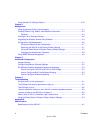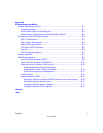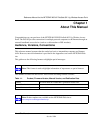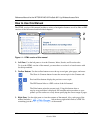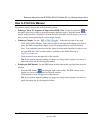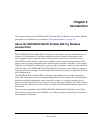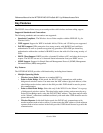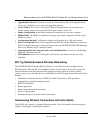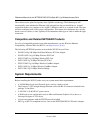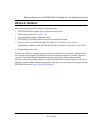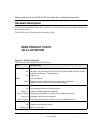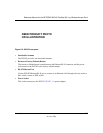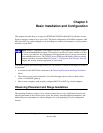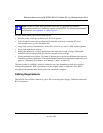
Reference Manual for the NETGEAR WG102 ProSafe 802.11g Wireless Access Point
2-2 Introduction
October 2004
Key Features
The WG102 Access Point is easy-to-use and provides solid wireless and networking support.
Supported Standards and Conventions
The following standards and conventions are supported:
• Standards Compliant. The Wireless Access Point complies with the IEEE 802.11g for
Wireless LANs.
• WEP support. Support for WEP is included. 64-bit, 128-bit, and 152-bit keys are supported.
• Full WPA support. WPA enterprise class strong security with RADIUS and certificate
authentication as well as dynamic encryption key generation. WPA-PSK pre-shared key
authentication without the overhead of RADIUS servers but with all of the strong security of
WPA.
• DHCP Client Support. DHCP provides a dynamic IP address to PCs and other devices upon
request. The WG102 can act as a client and obtain information from your DHPC server.
• SNMP Support. Support for Simple Network Management Protocol (SNMP) Management
Information Base (MIB) management.
Key Features
The NETGEAR WG102 provides solid functionality, including these features:
• Multiple Operating Modes
– Wireless Access Point. Operates as a standard 802.11g.
– Point-to-Point Bridge. In this mode, the WG102 only communicates with another
bridge-mode wireless station. You must enter the MAC address (physical address) of the
other bridge-mode wireless station in the field provided. WEP should be used to protect
this communication.
– Point-to-Multi-Point Bridge. Select this only if this WG102 is the “Master” for a group
of bridge-mode wireless stations. The other bridge-mode wireless stations must be set to
Point-to-Point Bridge mode, using this WG102's MAC address. They then send all traffic
to this “Master”, rather than communicate directly with each other. WEP should be used to
protect this traffic.
– Wireless Repeater. In this half-duplex mode, the WG102 only communicates with
another repeater-mode wireless station. You must enter the MAC address of both adjacent
repeater-mode wireless stations in the fields provided. WEP should be used to protect this
communication.



